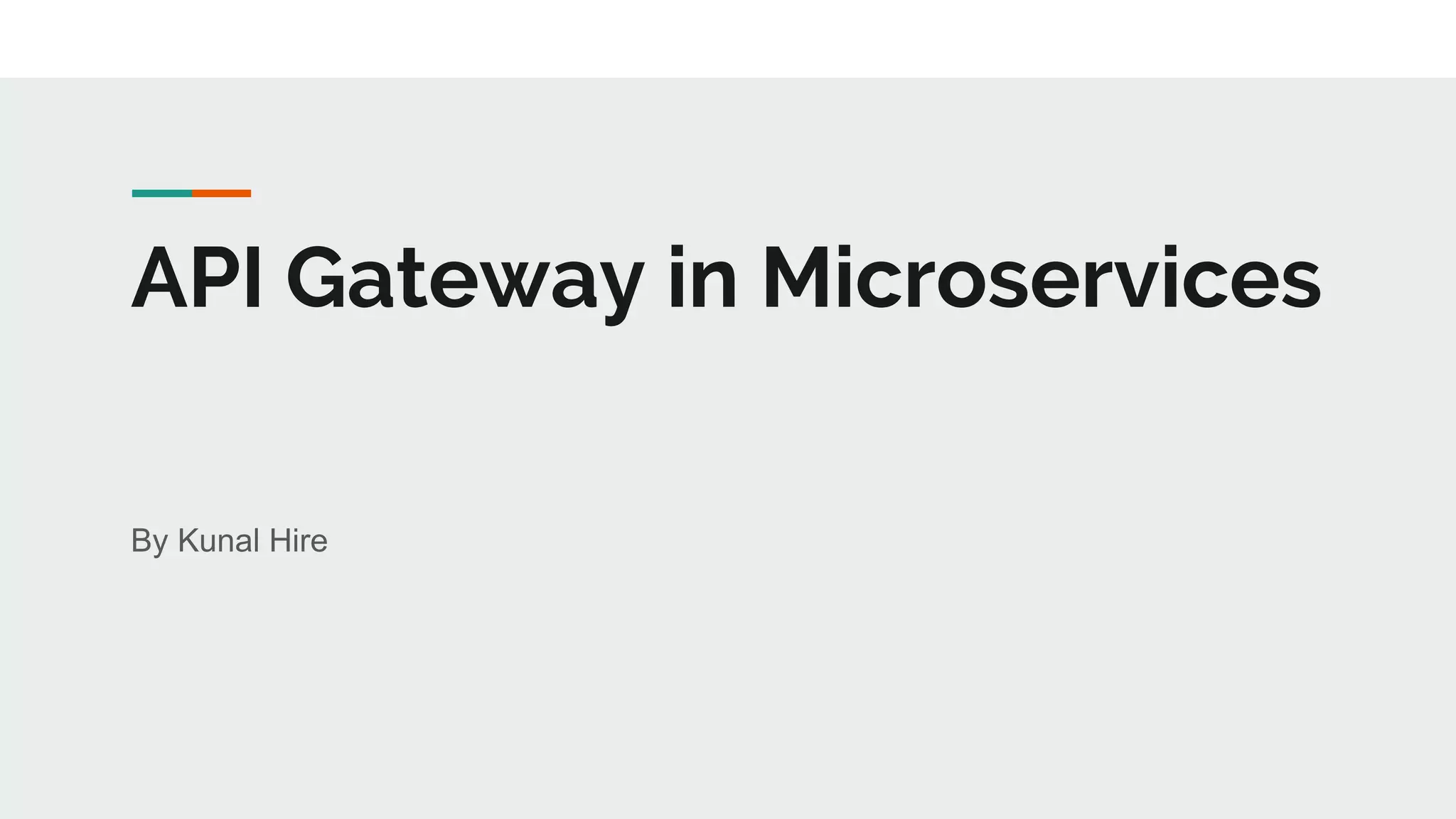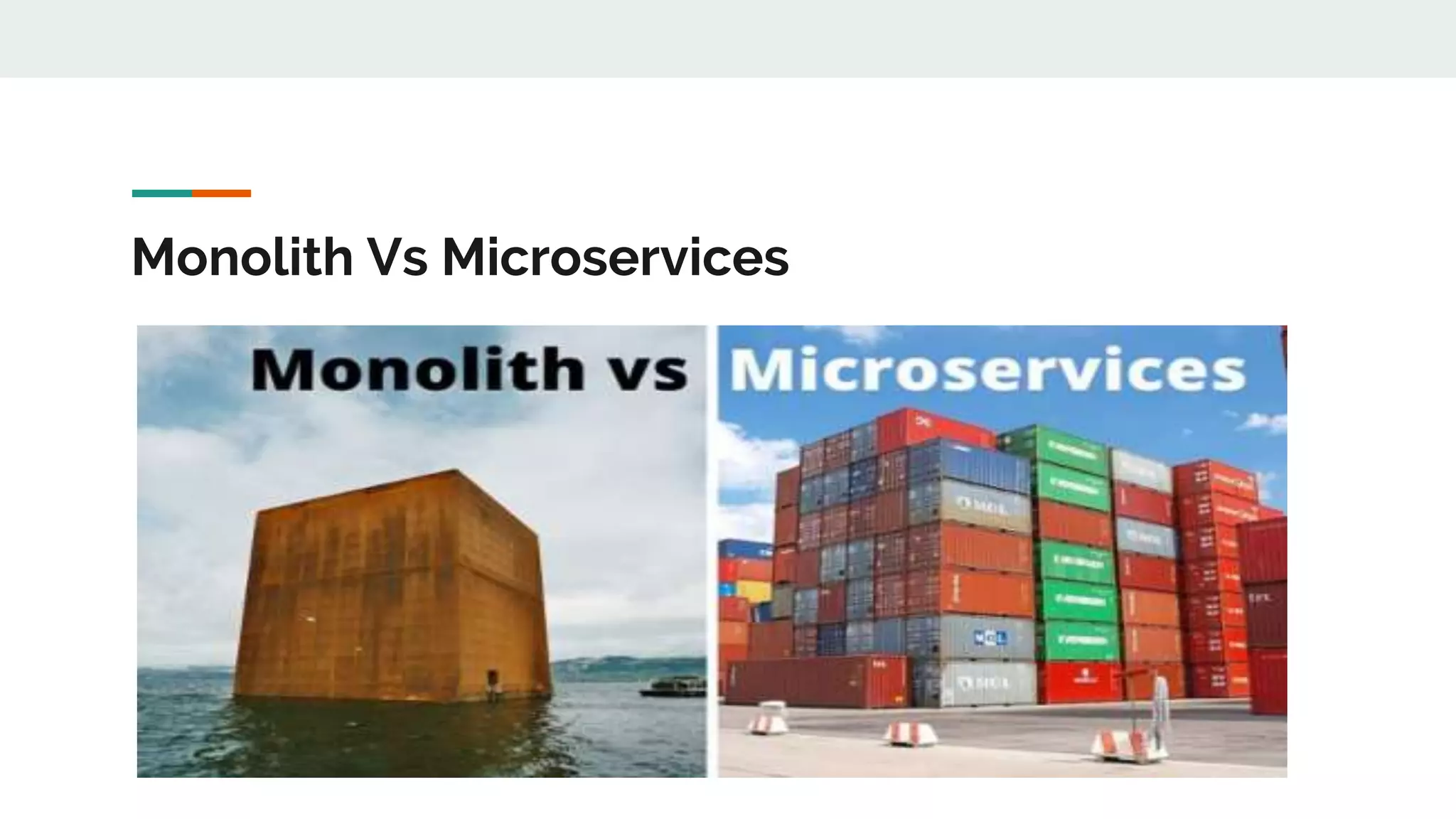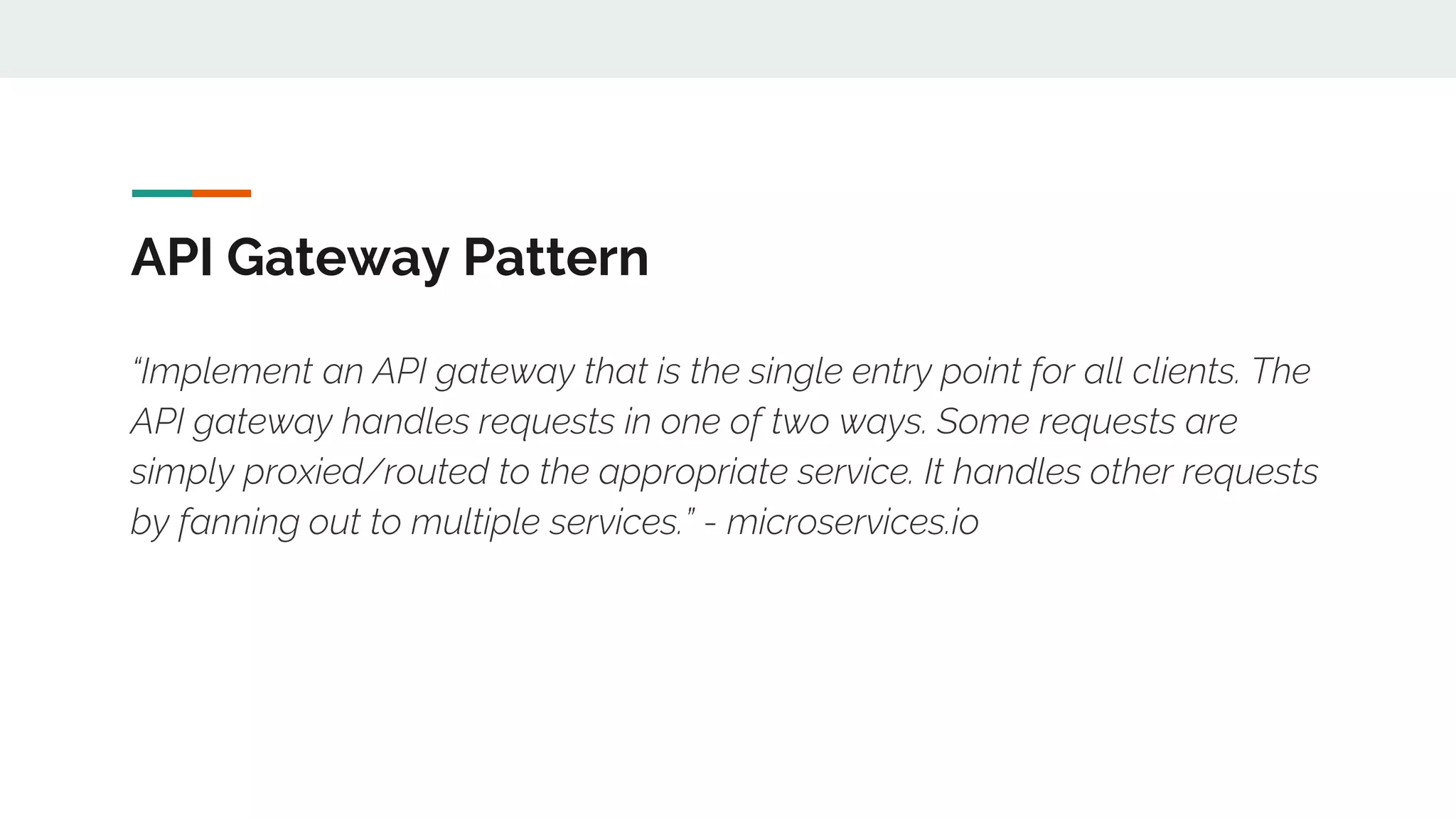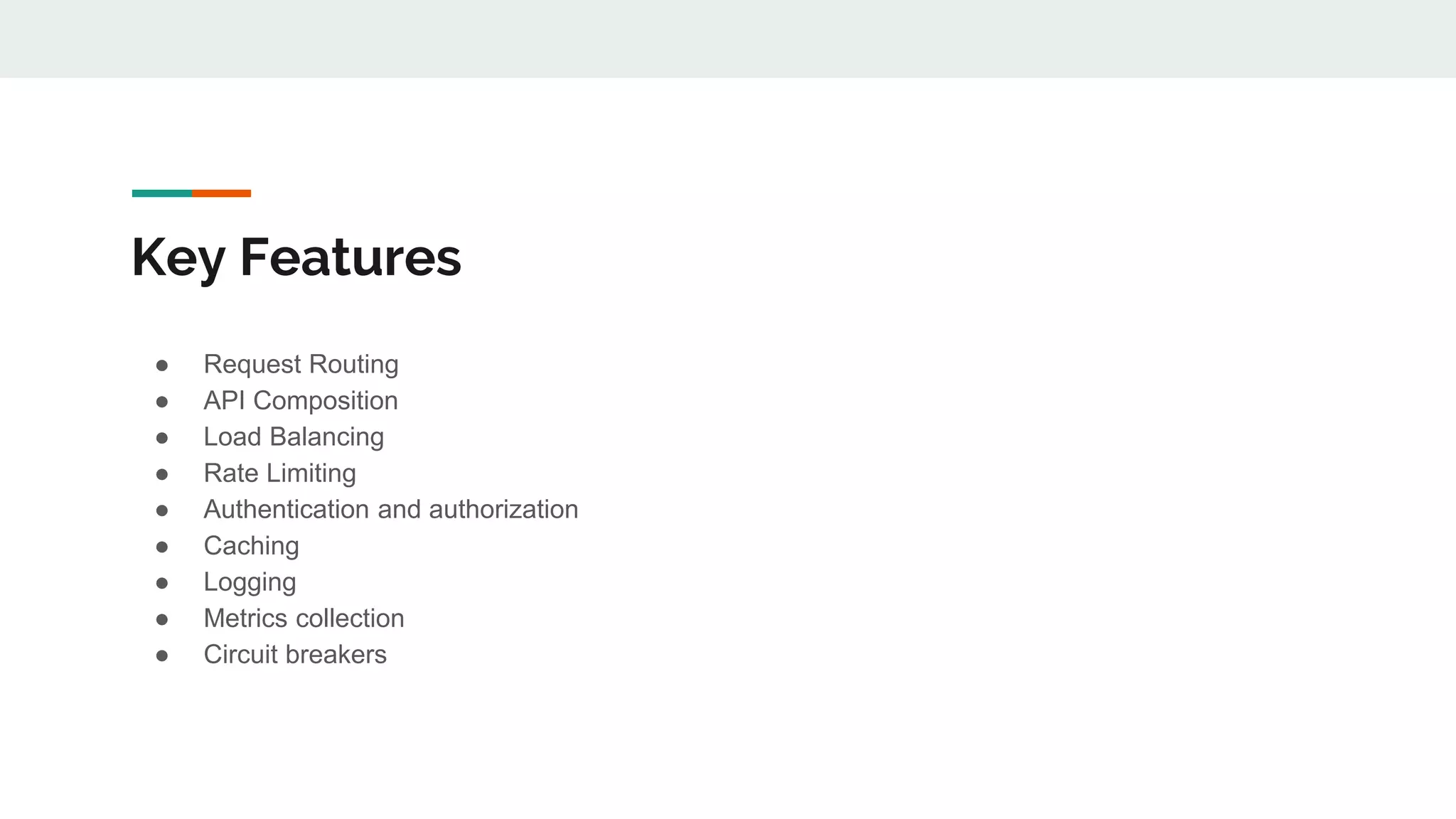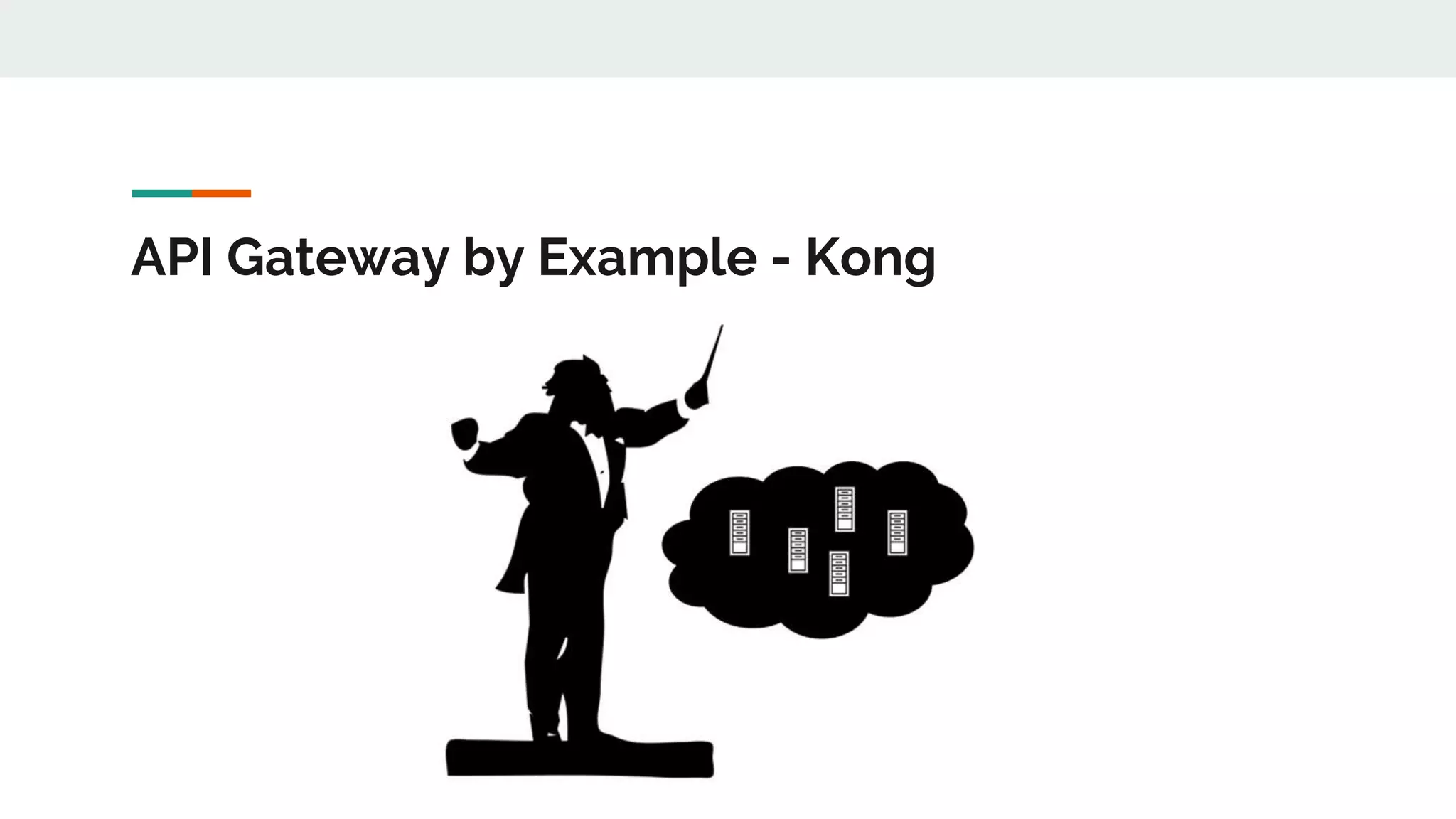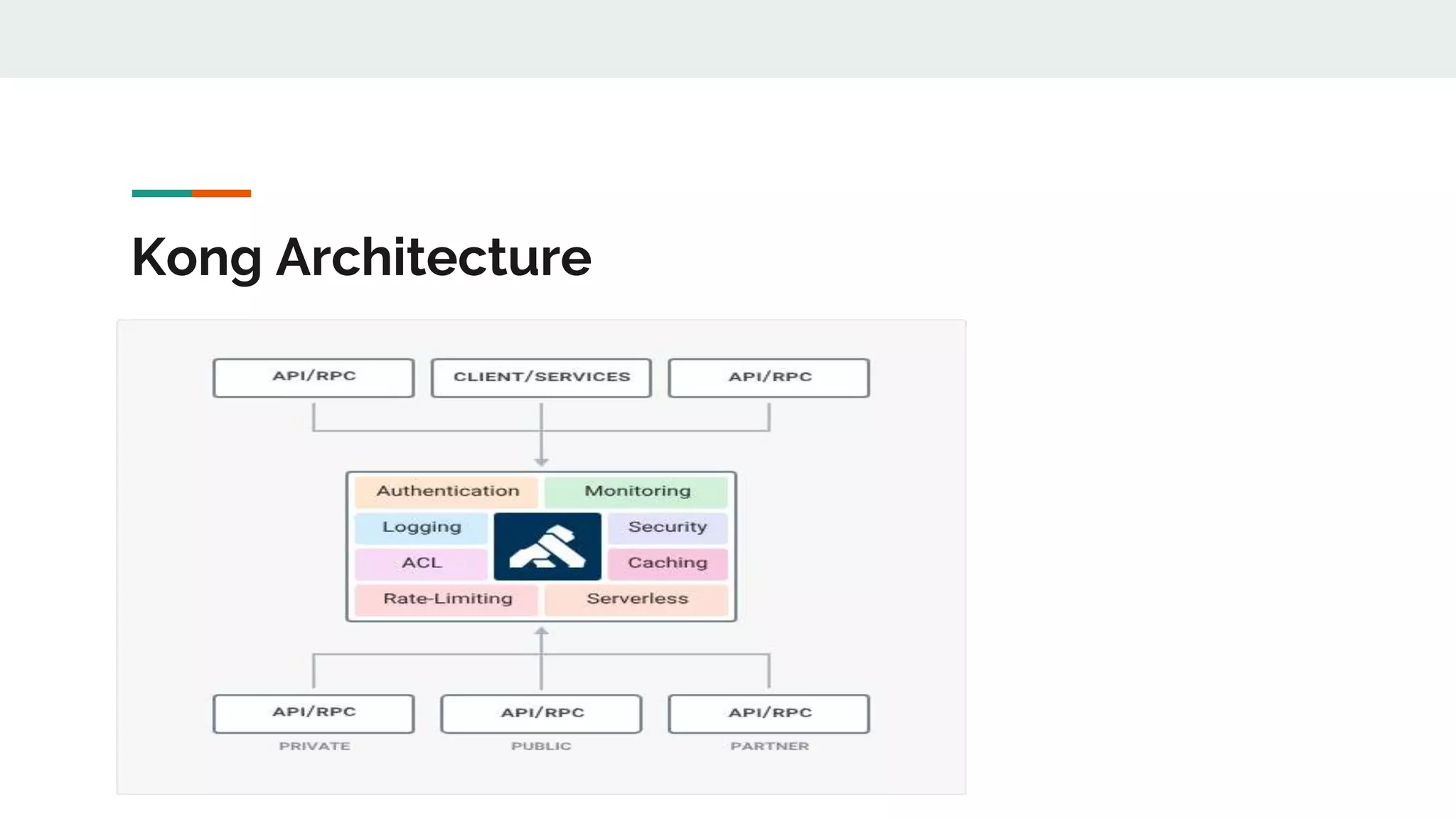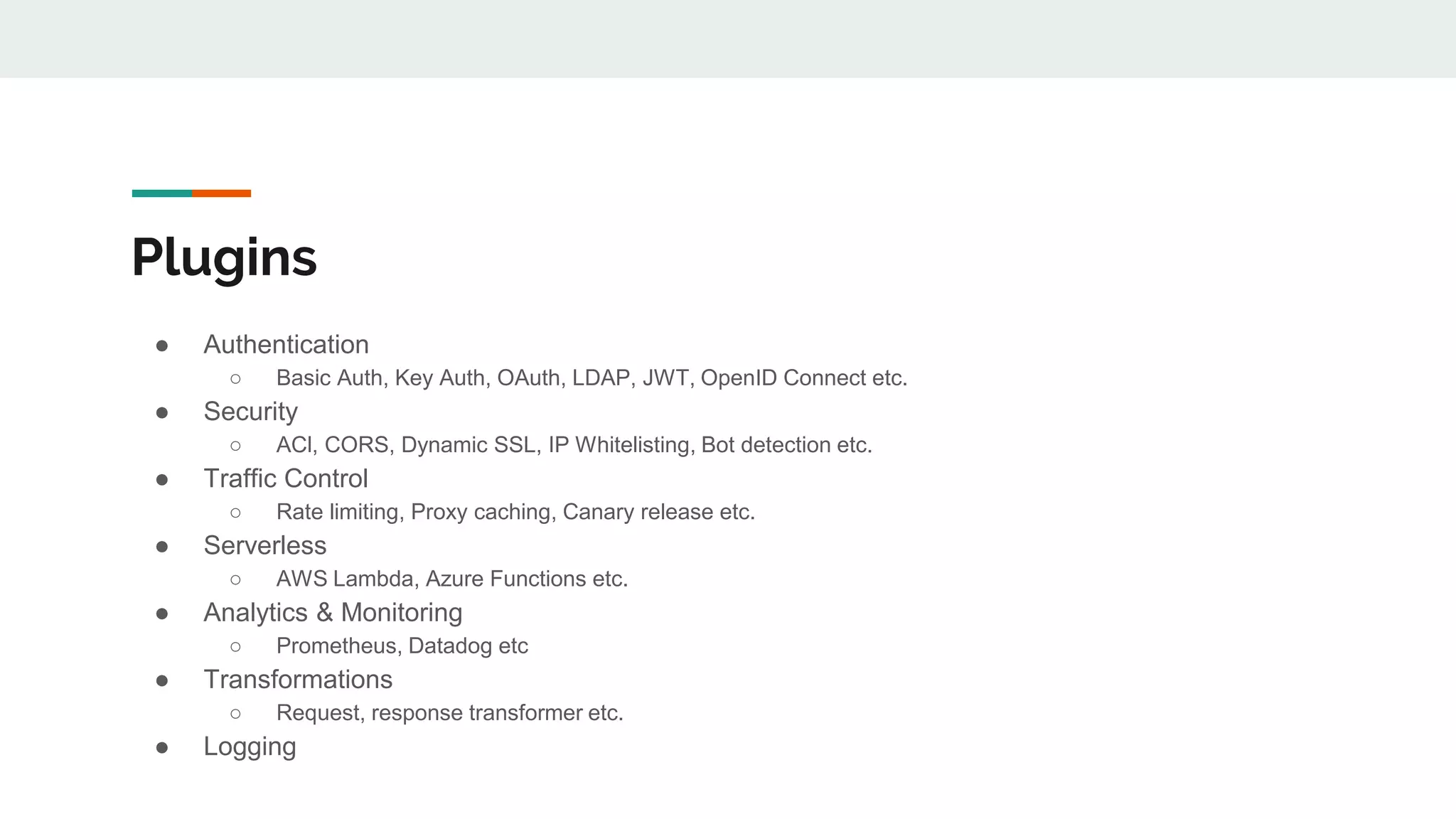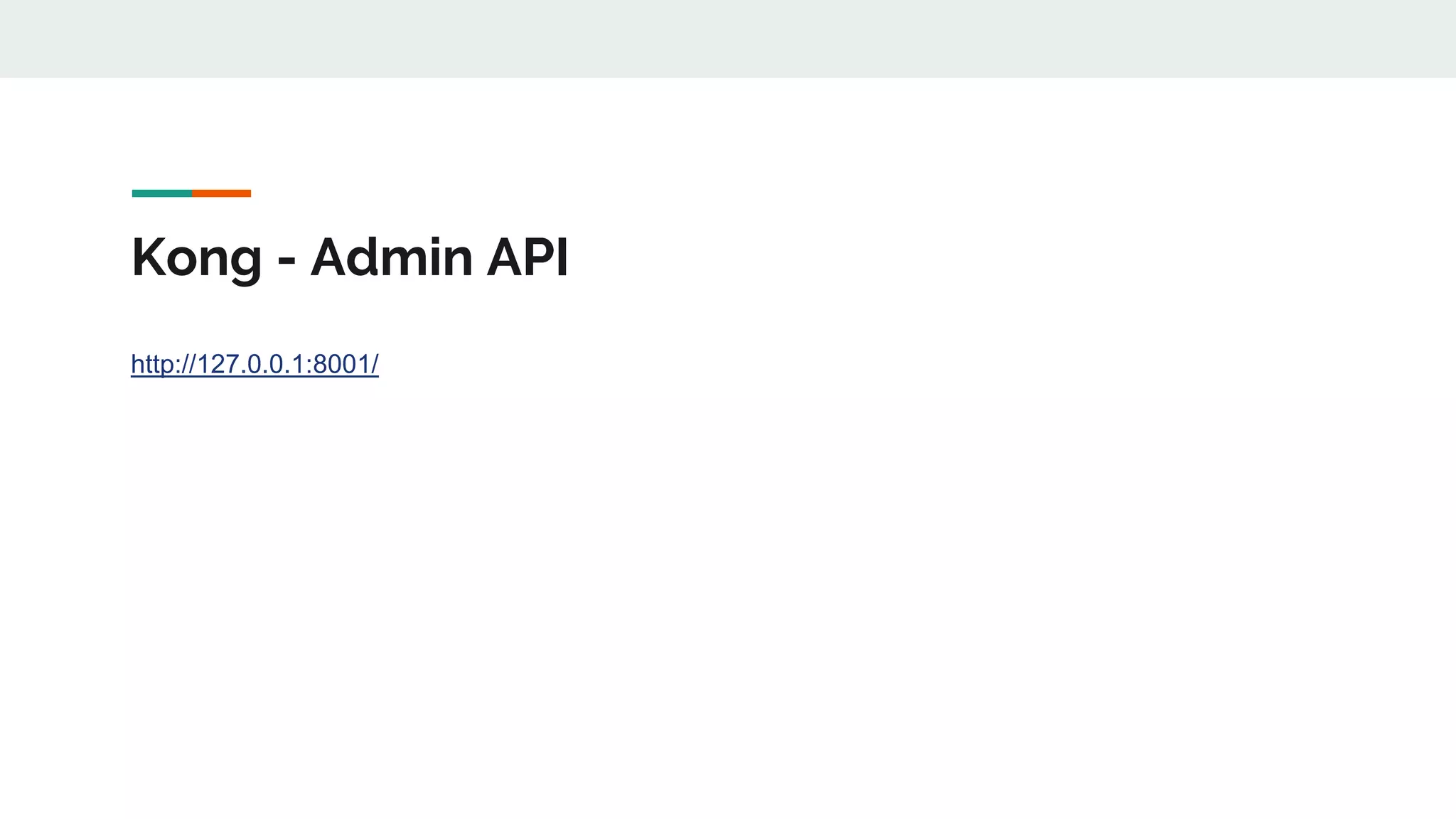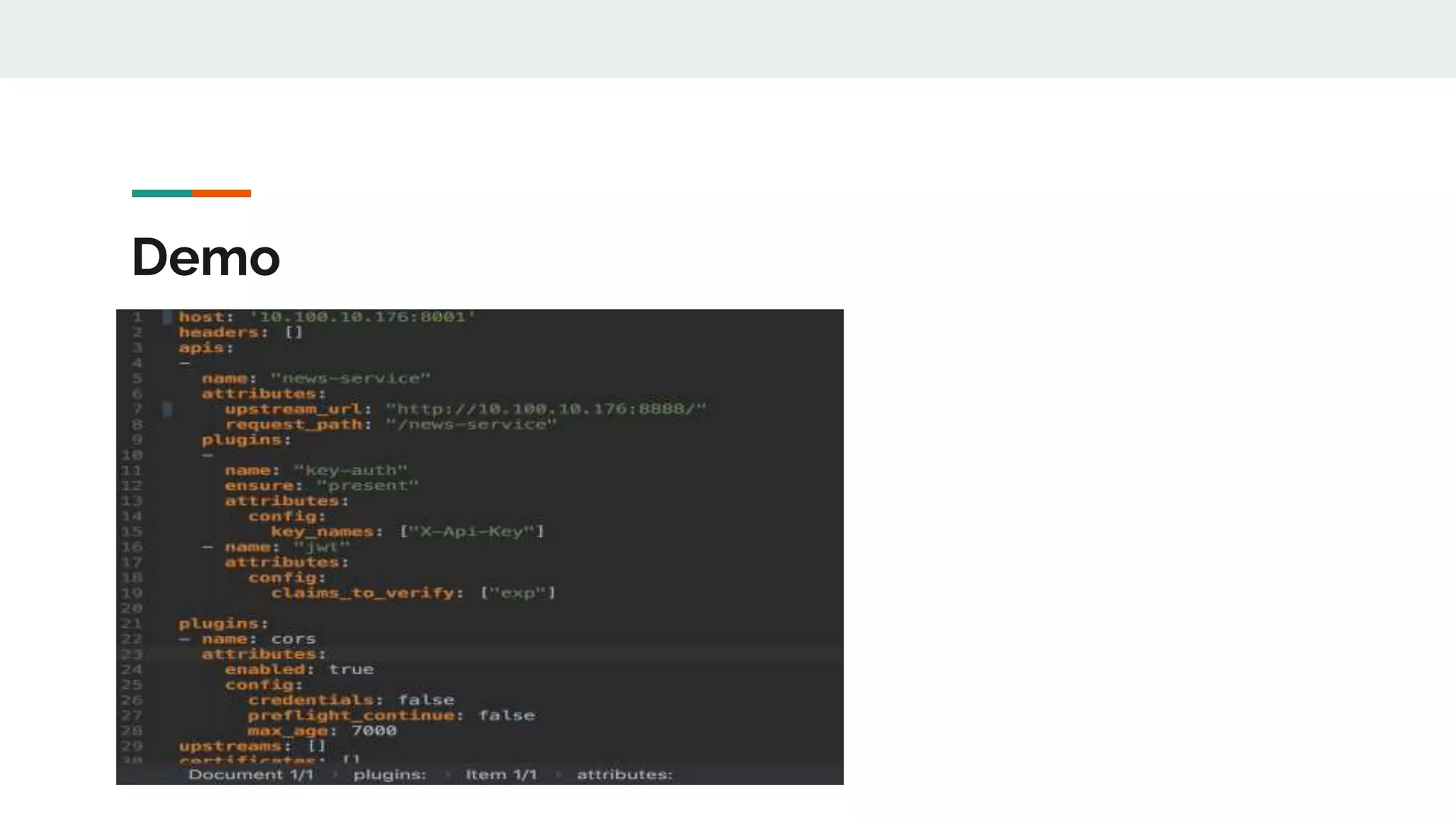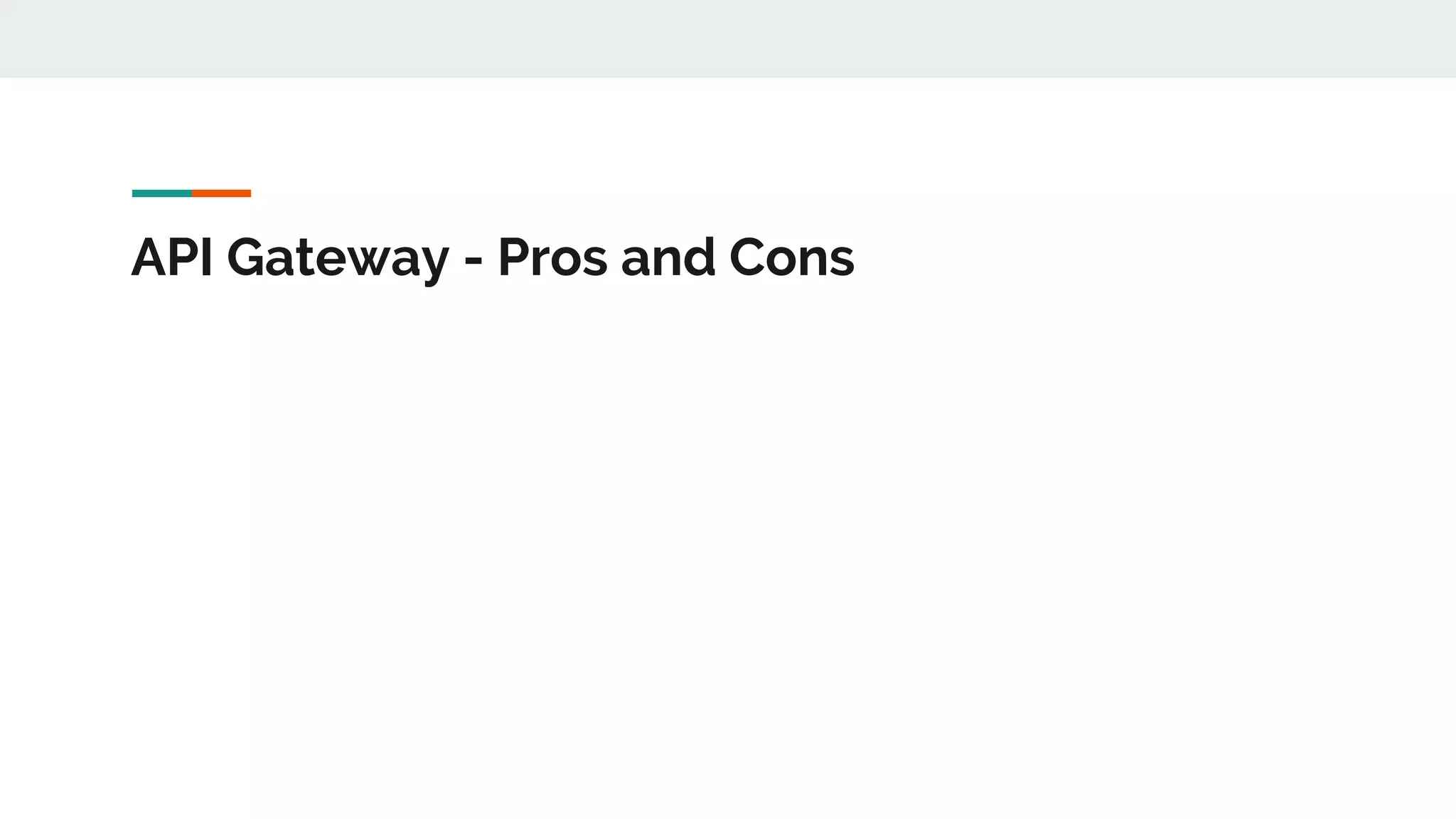The document discusses the role of an API gateway in microservices architecture, highlighting that it serves as the single entry point for client requests and can proxy or route these requests to the appropriate services. Key features of an API gateway include request routing, load balancing, authentication, caching, and traffic control mechanisms. Additionally, it provides an overview of Kong as an example of an API gateway, detailing its plugins and functionalities.
